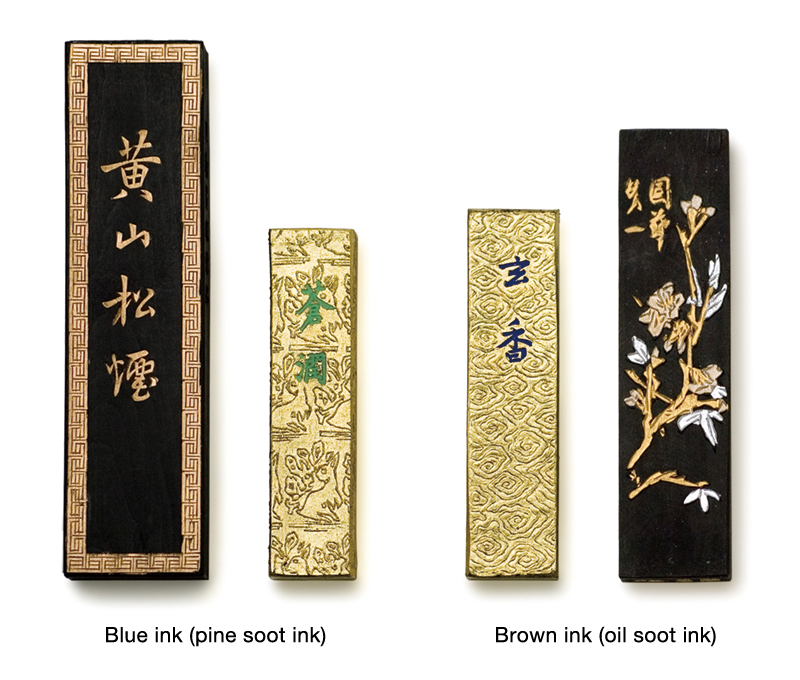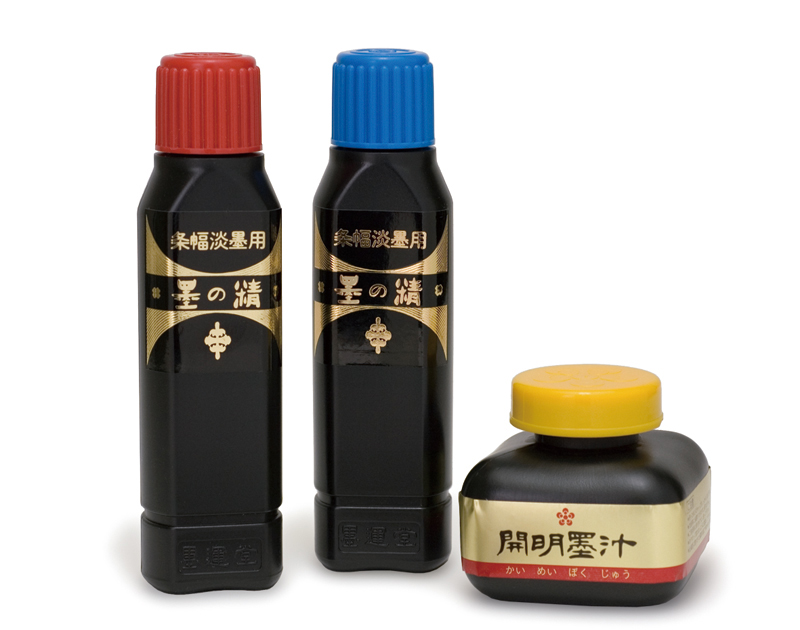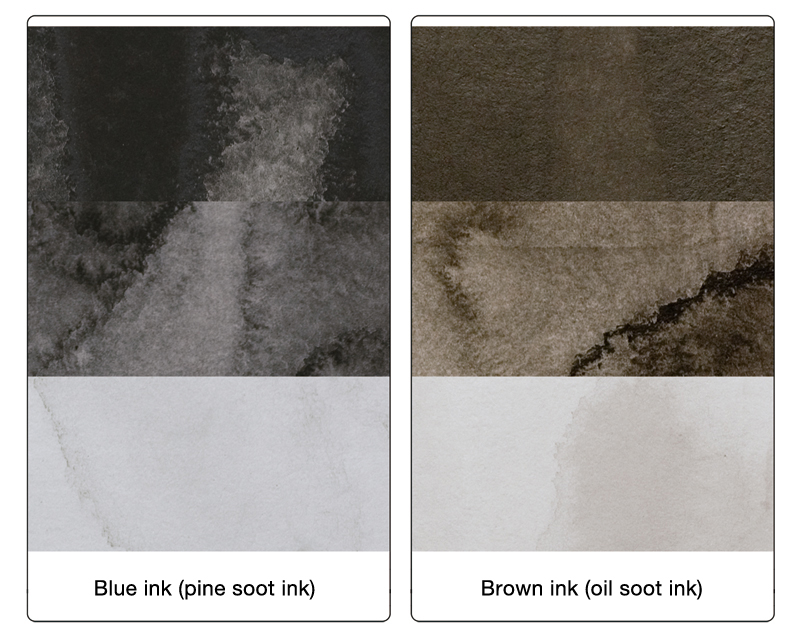Inksticks (Sumi)
墨
Sumi
CATEGORIES
Inksticks are created from the soot of burned oil or burned pinewood, which is then bound with glue, hardened by kneading, and dried. The block is then rubbed together with water in an ink stone to produce liquid ink. As the saying has it, sumi ni gosai ari (“there are five colors in black ink”)—even black ink has many different variations of color.
Inksticks were developed in ancient China and brought to Japan via the Goguryeo kingdom in Korea during the reign of the Empress Suiko. Japanese-made ink is called waboku, and Chinese-made ink is called tōboku. Each has different characteristics depending on the climate of the region where the inkstick was made; for example, waboku contains a lot of glue and therefore soaks into the page far less easily than tōboku, which has less glue and spread more smoothly. Inksticks generally fall into two categories: those made from oil soot (yuen) and those made from pine soot (shōen). Oil soot ink is made from the soot of vegetable oils such as canola oil, tung oil, or sesame oil. Taking on a brownish hue when diluted, this type of ink is sometimes called “brown ink” (chaboku). As its carbon particles are particularly small, the color of the ink has gloss and purity and remains relatively consistent as the ink gets older. Pine soot ink is made of soot from burned pinewood, which is then hardened. Featuring a bluish tinge that lends the ink its “blue ink” (seiboku) nickname, pine soot ink particles are coarse and vary in size. The ink does not have a glossy character, and its color changes to a blue-black as time progresses. Considering that indigo dyes can now be added to oil soot ink to produce blue ink and there are also inks produced from crude oil, however, it is not always the case that oil soot ink is “brown ink” and pine soot ink is “blue ink.” There are also colored inks (saiboku) that use pigments and dyes instead of soot.
Inksticks are produced in winter, when the glue is less likely to spoil. The main components, the soot and the glue, are mixed with fragrances and coloring agents. After being kneaded by hand and foot until they develop a luster, the ink blocks are placed in wooden molds and dried for half a month to three months at the shortest to several years at the longest. Finally, the surface is polished with clamshells. In order for the ink particles to be smooth and produce a good color, it is important to rub the inkstick on the ink stone gently. Next, transfer the liquid ink to a palette from the ink stone and add water to achieve the right consistency. Make sure to use ink that you have made in your ink stone that day and not older ink that has already dried. After use, carefully dry the inkstick and, to avoid cracks and mold, place it back in the box that it came in. Store in a dry place without extreme changes in temperature.
Liquid ink, which has little glue and contains preservatives, is also available for purchase. These store-bought items can help save time and effort.
Ink is available for purchase at art stores that carry Japanese painting and Japanese calligraphy supplies, as well as at general art stores.
RELATED PAGES

 Liquid (India) ink
Liquid (India) ink- Blue ink vs. brown ink: A comparison

